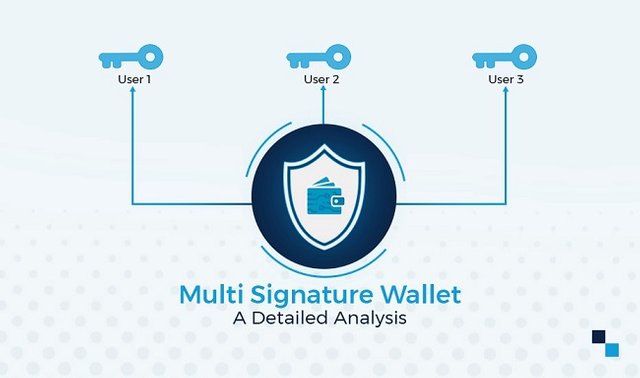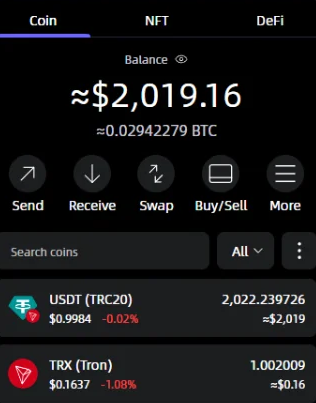What is multi-signature wallet fraud and how to protect yourself from it?

Multisig Wallets are designed as a secure solution for managing digital assets; however, these same security tools can also become a tool for fraud. Many users think that using multisig wallets will keep them safe from risks, but they are unaware that some scammers and hackers can use certain tricks to break this security barrier and steal their assets!
But what is multisig wallet fraud and how is it done? In this article, we will take a close look at how multisig wallets work, the types of common frauds associated with it (especially on the Tron network), and methods to prevent these attacks. Therefore, if you are also looking to increase the security of your digital assets, we recommend that you read this article to the end.
What is a multi-signature wallet?
In the world of cryptocurrency, a multisig wallet is a type of wallet that requires digital signatures from multiple private keys to complete a transaction. This structure can be thought of as similar to two-factor authentication (2FA), except that instead of an SMS or app verification, multiple people need to verify the transaction.
For example, a wallet might be set up so that a transfer of funds requires at least two signatures from three signatories (2 out of 3), and each transaction is approved by two-thirds of the private keys. As a result, no one person can move assets alone; just like a safe requires multiple keys to access and no one can open it with just their own key!
This feature has made multi-signature wallets a popular choice among corporations, decentralized autonomous organizations (DAOs), family trusts, and mutual funds.
But the very structure that is supposed to increase security sometimes becomes a tool for fraud.
What is multi-signature wallet fraud?
The logic behind this type of scam is simple but deceptive. Scammers trick the victim into believing that they have full control of a cryptocurrency wallet, when in reality they do not.
A common trick for this scam is that someone posts a message on social media platforms such as YouTube, X (formerly Twitter), or Telegram containing the private key or seed phrase of a wallet. At first glance, it may seem like a novice needs help, but in reality, this is a bait to trick users.

In this method, the victim, who thinks that the naive user (the same clever scammer!) Has mistakenly shared her private key on social media and now she has accidentally gained access to a wallet full of digital currency, falls into the trap and the next step of the scam begins.
Multi-signature scam bait using SafePal wallet
One of the most common methods is as follows: the fraudster posts a wallet recovery phrase online, such as a tweet on social network X. The curious or greedy user quickly installs a wallet extension such as SafePal and immediately enters the recovery phrase, seemingly accessing a wallet containing a significant amount of cryptocurrency, such as 2,022 Tether TRC-20 on the Tron network.

In this scenario, the victim thinks that luck has suddenly turned to him and that the clouds, the wind, the fog, the sun and the sky have joined hands to give him a lot of free cryptocurrency! So he decides to transfer the Tethers to his personal wallet. However, he realizes that this wallet does not have any Tron tokens (TRX) to pay the transaction fee!
This is where the victim falls into the trap. To make the transaction, he sends some TRX to the wallet to pay the network transfer fee; but then he realizes that the transfer is not allowed due to the multi-signature of the wallet.
The reason is simple: this wallet is set up as a multi-signature and it is not possible to sign the transaction with just one private key. In effect, the victim thought they had full control of the wallet, but in reality they only had one of the required multiple signatures, with the rest being held by the fraudster.
The good news is that if you fall victim to such a scam, you will likely lose a relatively small amount of cryptocurrency (equivalent to gas fees). However, the more sophisticated multi-signature scams we mentioned earlier can directly target your cryptocurrency wallet and lead to much larger losses.
Check the scammer's wallet address
By searching for the scammer’s wallet address in TronScan Explorer, we find that the account is actually controlled by another address. This is exactly the feature of Multi-Sig wallets on the Tron network.

In this structure, it is possible to specify the level of access each signatory has. In this scenario, the address ending with bHCoc has full access to the wallet (Owner Permission), and the other account ending with Kk78Z is designed to trick users into simply entering it to show the wallet balance, but is not actually controllable.
Ways to prevent fraud with multi-signature wallets
To avoid falling for these types of scams, you should follow a few simple but key principles:
1. Keep your private key and recovery phrase confidential.
No reputable entity, wallet, or legitimate exchange will ever ask you to send your private key or recovery phrase. This information should only be in your possession and kept in a safe place.2- Use only official apps and software
There are many fake versions of cryptocurrency wallets on the Internet. Always download apps from official sources such as Google Play or the App Store, and if you want to download the app directly from the official wallet website, be sure to check the website address carefully.
3- Check access regularly
If you use Multi-Sig wallets, periodically check who has access to the wallet. If you see unknown people, immediately revoke their access.
4- Use hardware wallets
These devices store private key information offline. So even if the digital keys are leaked, there is no way to transfer without a physical device.
5- Enable Two-Factor Authentication (2FA)
Many exchanges and wallets support 2FA. Enabling this feature can add an important layer of security to your account. In fact, this feature prevents an attacker from accessing your assets alone if your password is compromised.
6- Always keep your information up to date
Cryptocurrency security threats are changing every day. By following security news and training, you can always stay a few steps ahead of attackers.
7- Pay attention to wallet security warnings
Some wallets, such as SafeLink and TrustWallet, display warnings that funds are blocked or require multi-signature verification when encountering suspicious addresses. Do not ignore these warnings.
8- Don’t be fooled by recovery phrases shared on social media!
Although this scam is very common, there are still people who fall for it. No one shares their wallet recovery phrases. This is a trap. Remember, free cheese is only in a mousetrap.
Final words
Multi-signature wallets add an extra layer of security to cryptocurrency transactions, but scammers have found ways to exploit this feature to trick users. From phishing attacks to transaction fee traps, scammers are using a variety of methods to take advantage of crypto investors.
In this article, we tried to examine multi-signature wallet scams and how they work. Finally, we looked at some ways to prevent these scams. If you still have any questions, let us know in the comments section.